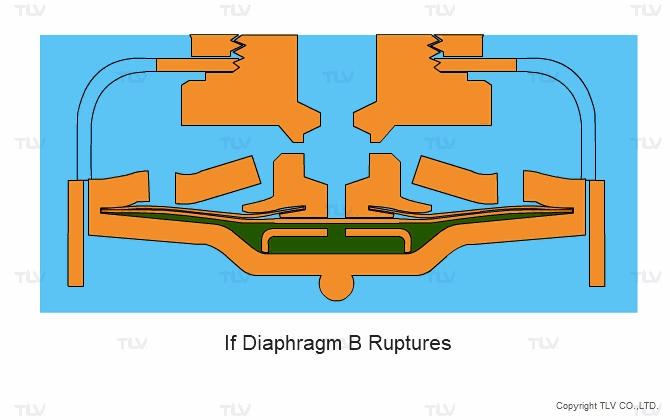- Home
- Products
- Steam Traps
- Thermostatic Steam Traps
- Overview
Fluid Control Equipment
Thermostatic Steam Traps
L Series/LV Series/FL Series
Thermostatic Steam Trap Operating Characteristics
Highly versatile steam traps
Unlike bimetallic traps, thermostatic traps do not require adjustment according to operating conditions and cover a wide pressure range. Moreover, they can be used for a variety of applications, such as on steam mains, process equipment, and steam tracers. Traps can be used at pressures up to 90% of the inlet pressure, making them ideal for condensate recovery lines.
Operating Characteristics/Relationship between condensate load and discharge characteristics
Steam traps with built-in X-element will "drip" at low condensate loads. This is similar to the operation of Free Float® type traps which continuously discharge condensate, allowing the valve to adjust to the volume of inflowing condensate. At high condensate loads, the steam trap operates "intermittently" like a disc-type trap.
What is an X-element?
The X-element is comprised of a valve and a diaphragm that transmits the force of a thermoliquid (temperature-sensitive fluid). When surrounded by steam, the valve is closed. When condensate, air or other non-condensable gases are present, the valve is open. It can also discharge high temperature non-condensable gases, something bimetal air vents are unable to do. This is made possible due to the special properties of the thermoliquid.
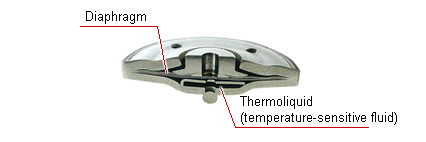
Thermoliquid, like water, is liquid when kept under a certain pressure and temperature, and expands to become a gas when its temperature rises above a certain point. The temperature at which it becomes a gas is approximately 6°C (22°C for air vents) lower than the temperature at which water becomes steam.
So when it is surrounded by steam, the thermoliquid is a gas and the chamber containing the thermoliquid expands and pushes on the diaphragm. This causes the gap between the valve and the valve opening on the diaphragm to close.
In contrast, when the area around the X-element is at a low temperature (when it is either condensate or air), the thermoliquid is in the liquid phase and the valve is not being pushed closed, so condensate and air are discharged from the gap between the valve and the valve opening.
Note: there are two main types of X-element: the standard type that operates (opens and closes) at 6°C below saturated steam temperature, and a type that operates at 22°C below that saturated steam temperature.
The LV8 and LV8-HC models operate at 2°C below saturated steam temperature.
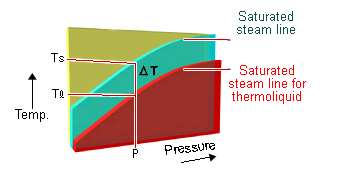
Under Normal Operation
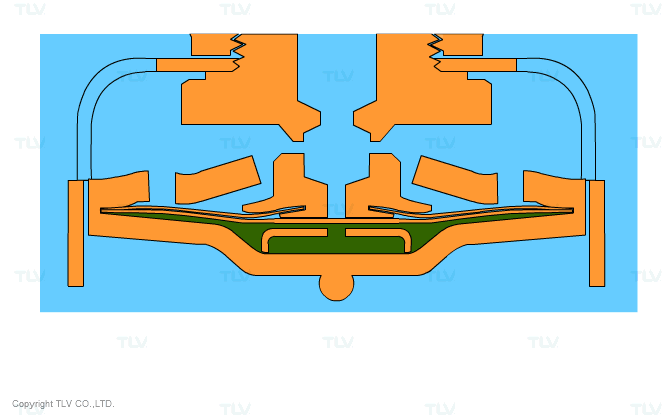
"Fail Open" Safety Feature
Fail safe features are necessary in quality precision instruments. TLV therefore designed the X-element in such a way that the valve remains in the open position ('fail open' safety feature ) in the event the diaphragm ruptures.
If a steam trap fails, the valve may either remain open (blowing) or it may remain closed (blocked). If the valve remains closed, condensate accumulates in any equipment that cannot be shut down in order to replace the failed trap, and this pooling of condensate impairs the equipment's heating performance.
On the other hand, if the valve remains open, the supply of steam continues uninterrupted and the equipment can continue to be productive. Due to this special design, even if the diaphragm ruptures and becomes technically 'closed' (by remaining in contact with the valve opening due to the flow of steam and condensate), condensate, etc. can still flow through the valve opening via the hole in the center of the valve.
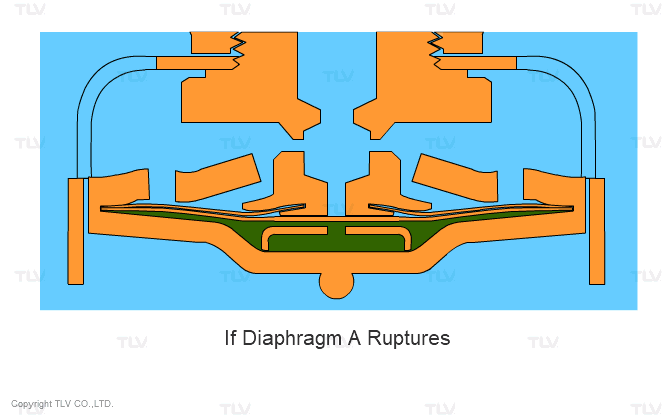
As long as the supply of steam continues, the valve is pushed up and remains fully open.
